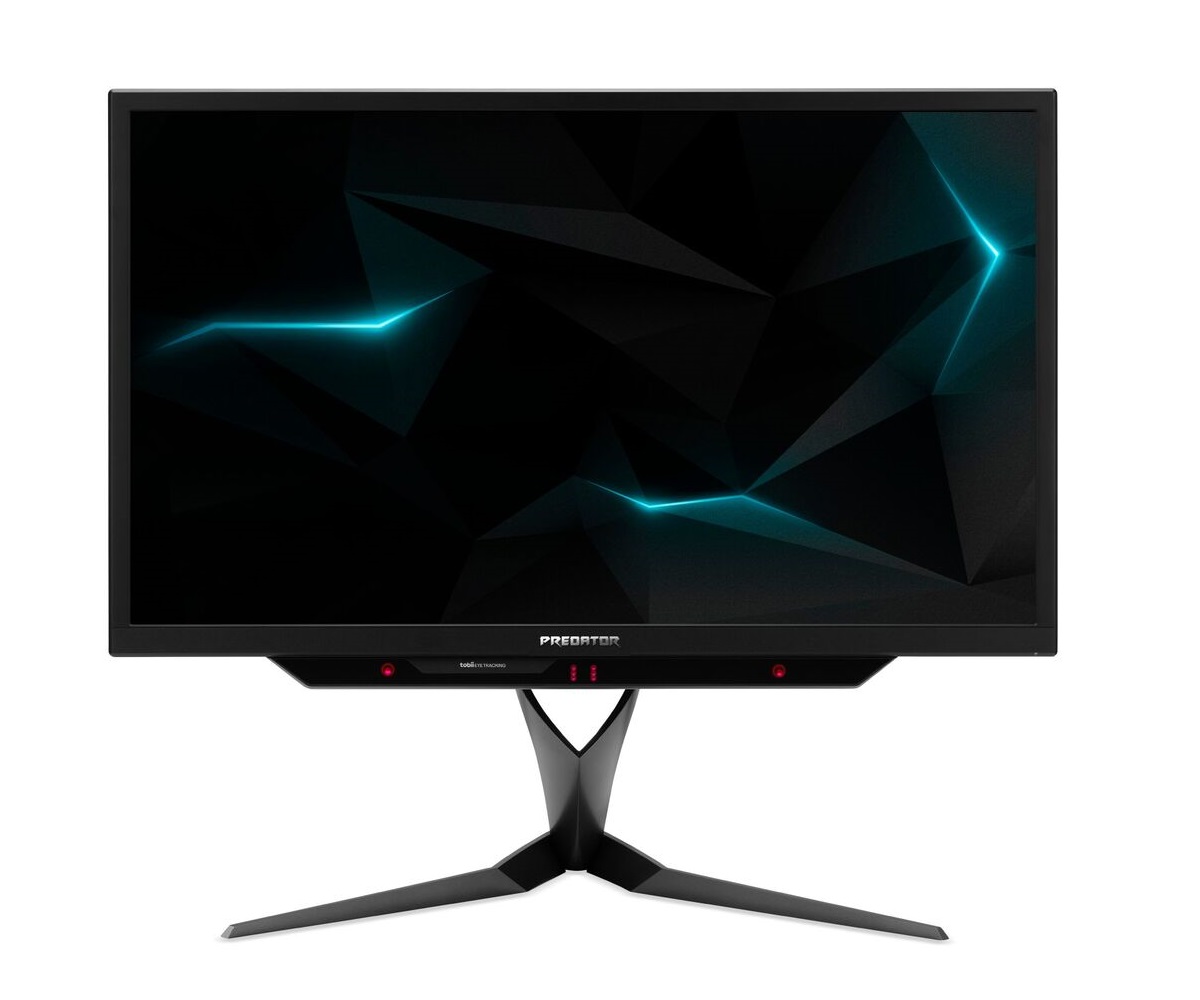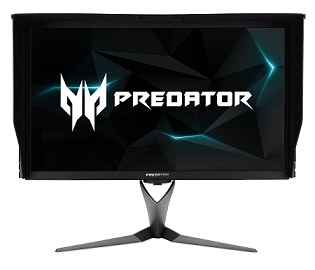Acer X27 ‘4K’ UHD model with 144Hz IPS-type panel
As an Amazon Associate I earn from qualifying purchases made using the “Buy” button at the bottom of this post. Where possible, you'll be redirected to your nearest store. Further information on supporting our work.Update: Update on price and availability. News piece below initially published 27th April 2017.
Users looking for a high refresh rate on their monitor have so far had to make do with resolutions that are lower than ‘4K’ UHD (3840 x 2160). For users wishing to display their content in UHD, they’ve had to settle for 60Hz or just a very mild overclock beyond this. The ASUS PG27UQ was one of two models shown off (or at least mentioned) at CES 2017 sporting a 144Hz ‘4K’ panel. The other was a then unnamed Acer alternative, now known to be the X27 of their Predator gaming monitor line-up. The monitor features a single-stage bezel of moderate thickness, which is due to the panel itself using a specialist backlight solution as we’ll explore later. There is also a variant with a ‘T’ suffix, which has a boxy area on the bottom bezel, shown below. This a Tobii Eye Tracking unit which enables you to control games and other applications that support the technology using eye movements. The OSD (On Screen Display) is controlled by pressable buttons on the right side of the monitor and there is a small blue forward-facing power LED. A detachable ‘calibration’ hood is also included to reduce glare on the screen. The stand of this monitor is also interesting as it’s diamond-cut metal with an artistic shape – we think it looks a bit like a squatting man holding up the screen, but that’s probably just us imagining things.

The monitor uses a 27” IPS-type (AUO AHVA) panel with 144Hz refresh rate and ‘4K’ UHD resolution (3840 x 2160). As usual for such a panel, 178° horizontal and vertical viewing angles are specified and relatively strong colour consistency is expected. A light matte anti-glare screen surface is used, providing good vibrancy potential. The real party-trick is the monitor’s support for G-SYNC HDR. This provides a variable refresh rate (30 – 144Hz), allowing the monitor to match its refresh rate to the frame rate of the content and hence remove the stuttering (VSync on) and tearing (VSync off) that typically occurs when there is a mismatch between them. It also gives the monitor High Dynamic Range (HDR) capability, with the backlight being split into 384 ‘dimming zones’ that can have their brightness independently controlled. In other words, it’s a FALD (Full Array Local Dimming) solution. Some of these zones can be switched off (or very close to it) whilst others are as bright as 1000 cd/m², which is the peak luminance of the monitor. This provides an exceptionally high static contrast ratio of the monitor, which isn’t currently specified but will leave the usual 1000:1 specified for the panel type in the dust. It should also help alleviate ‘IPS glow’ (‘AHVA glow’) and possible backlight bleed, due to the fact the darker areas where this is most prevalent will be lit with a very low backlight intensity.
Another part of the HDR support (specifically HDR10 targeted here) is the ability to display a wide range of distinct shades. This monitor supports 10-bit (8-bit + FRC) and also offers a flicker-free Quantum Dot backlight solution courtesy of Nanosys – a Quantum Dot Enhancement Film (QDEF). This provides 99% Adobe RGB coverage, allowing the monitor to display the sort of saturated shades that HDR10 calls for. A 4ms grey to grey response time is specified. 100 x 100mm VESA holes are included at the rear, whilst the provided stand includes tilt, height and swivel adjustment. The ports of the monitor are; DP 1.4, HDMI 2.0, 3 USB 3.0 ports (plus upstream), a 3.5mm headphone jack and a 3.5mm audio input. Acer’s ‘BluelightShield’ Low Blue Light (LBL) settings also feature, as does the suit of ‘GameView’ settings. This includes a range of on-screen crosshairs, a dark boost feature to enhance visibility in dark areas. Further information on the monitor can be found on the official product page. The monitor is now available for ~$2000 in the US, with availability in other regions such as the UK expected shortly.

